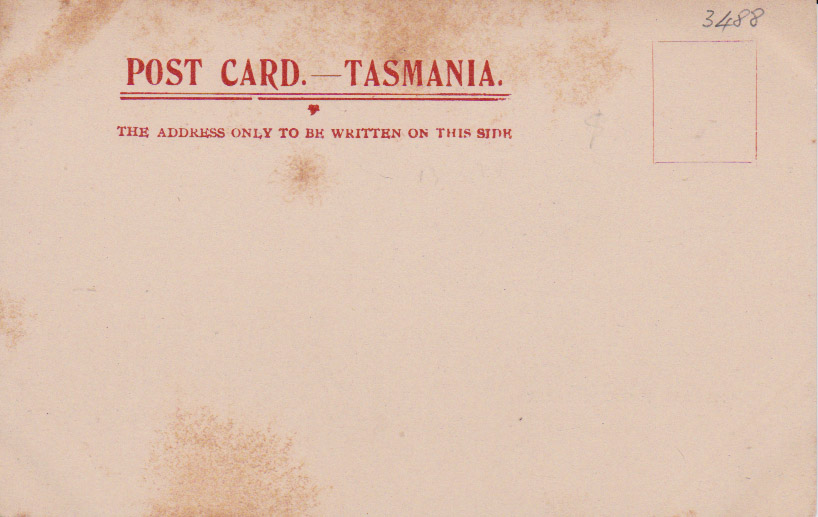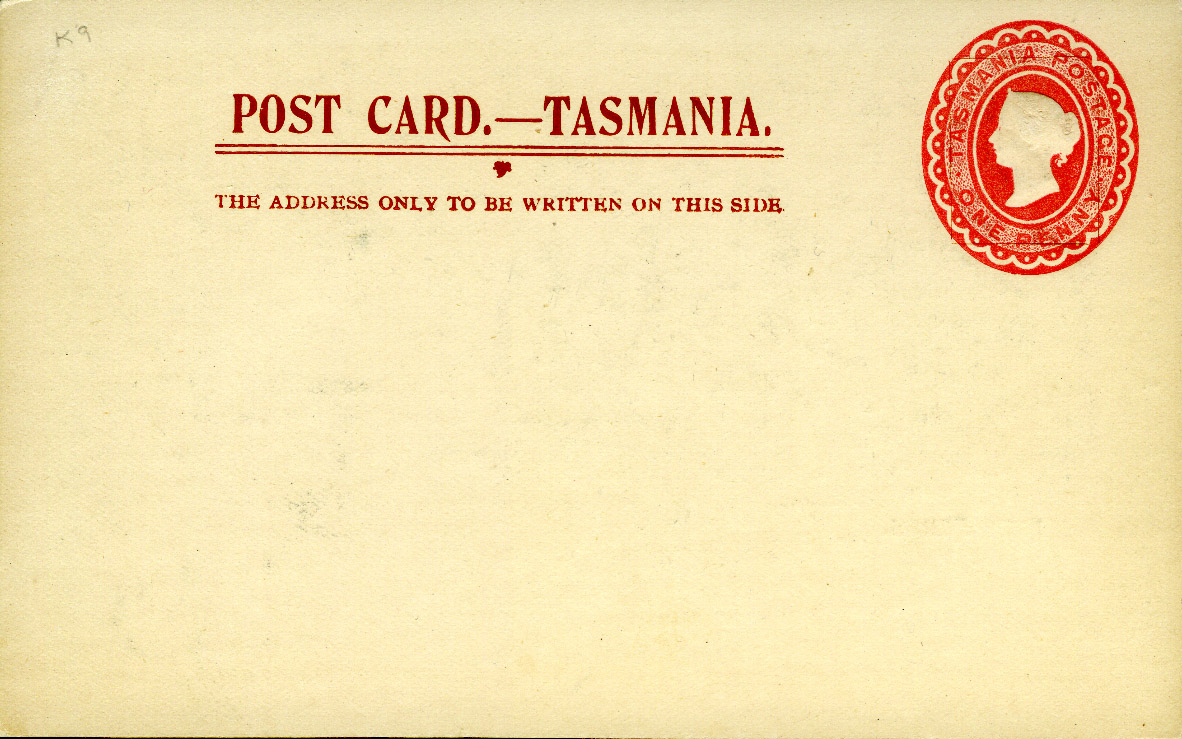This was Walch's second series of picture postcards. They are b&w undivided back cards. The arrangements for their production were the same as for the 1900 series - organised by Walch's London agent and printed by the British Photoprint Co.
Series Contents and Date Published: This series was announced in Walch's Literary Intelligencer (Note 1) of October, 1901. They said:
"Our Series of View Post Cards, which we bought out last year, were so greatly admired, and met with such a rapid sale, that we have increased the variety in the set to TWELVE, which now comprise:
- Launceston
- Government House
- Mt. Wellington
- Bridge over Huon
- Fern Trees
- Cape Raoul
- Walch's Corner, Hobart
- Derwent, New Norfolk
- Shot Tower, B.R. Road
- Port Arthur
- Hobart, from the Bay
- Fern Tree Bower
The set of 12 views for ONE SHILLING. By post, 1/2d."
The actual captions printed on the cards are a bit different. These are given below, with upper and lower case exactly as on the cards. (This is important, the 1902 series is mainly differentiated from the 1901 series by having the captions completely in capitals)
- HOBART from the Bay.
- LAUNCESTON from Trevallyn.
- GOVERNMENT HOUSE.
- MOUNT WELLINGTON.
- HUON BRIDGE, Huonville.
- FERN TREES.
- CAPE RAOUL.
- WALCH'S CORNER
- RIVER DERWENT at New Norfolk.
- THE SHOT TOWER, Brown's River Road.
- PORT ARTHUR from N.E.
- FERN TREE BOWER
Printing: Printed by the British Photoprint Co. by collotype.
Number in Series: 12

Identification: The front of the cards have a vignetted image, some 3/4 width, others full width. The caption is under the image in red. Short captions are in upper case. Long captions start in upper case and change to lower case. Along the left edge is J.WALCH & SONS, Hobart. The back of the cards have POST CARD.--TASMANIA in red print, with two lines underneath, and below them a leaf-like symbol. The layout is similar to the 1900 series, but the two lines under the heading are of equal length, and the leaf-like symbol is different.
History: The background to the production of these cards is given in the introduction to the 1900 Series.
Walch's London agent, Charles Holworthy, mentioned this second series in his letter to Walch's in Hobart, dated 9 August, 1901 (Note 2). He wrote:
"These are now ready, and will be shipped per S/S "Paparoa". I haven't seen a sample yet, but they tell me they came out much better this time, owing to bright weather. When possible you should try and arrange for such order to get here in the summer, as it makes such a difference."
The reason for the comments on the weather is that the cards were printed by collotype, which involves spreading a thin layer of emulsion onto a printing plate and allowing it to dry. As it dries it cracks into a minute reticulation that is light sensive, and accepts the printing ink in the exposed areas. The weather affects the degree of reticulation, and the quality of the final print.
 Embossed Stamped Cards: There is one complete set of the 12 cards in this series which is known embossed and stamped with 1 penny prepaid postage. How many of these cards exist is not known. Used cards of this type are not known to me.
Embossed Stamped Cards: There is one complete set of the 12 cards in this series which is known embossed and stamped with 1 penny prepaid postage. How many of these cards exist is not known. Used cards of this type are not known to me.
Comparison of the vignetted cards series: To come
Note 1: Walch's Literary Intelligencer was a monthly advertising publication by J. Walch & Sons. It is held by the State Library of Tasmania.
Note 2: Archives Office of Tasmania NS2857/1/8 letters from the London Office 1901
